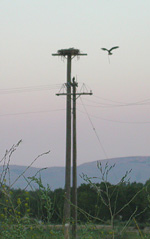
An Osprey Family Album
These photos were taken along the Provo
River near Utah Lake
between the 2nd
of July and the 31st of August 2003.
Part 1 (
Part 2
| Part 3,
Part 4
| Part 5 |
Part
6 | Changing Chick Profile)
(Printable Copy)
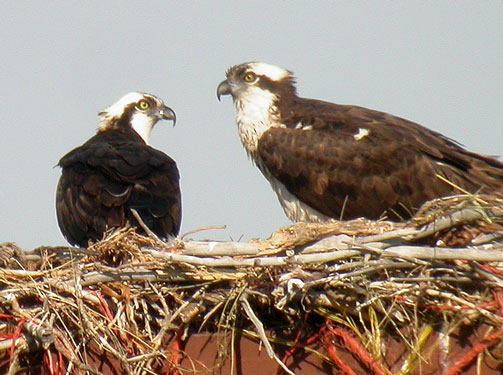 Using
a man-made platform at the top of a pole in an open field, a pair of Ospreys
accumulated nesting materials and set about starting a family.
Sometime in late May or early June the female laid some nice-looking white
to pink or cinnamon eggs heavily blotched and spotted with dark brown and
began the incubation process which takes a little over a month of pretty
much constant sitting. The males job is to feed the female while she
keeps the eggs at the right temperature until they hatch. This could
explain why the female is slightly larger than the male, though it's not
clear whether it would be from the male being over-worked or the female
having a bit more sedentary roll in the family.
Using
a man-made platform at the top of a pole in an open field, a pair of Ospreys
accumulated nesting materials and set about starting a family.
Sometime in late May or early June the female laid some nice-looking white
to pink or cinnamon eggs heavily blotched and spotted with dark brown and
began the incubation process which takes a little over a month of pretty
much constant sitting. The males job is to feed the female while she
keeps the eggs at the right temperature until they hatch. This could
explain why the female is slightly larger than the male, though it's not
clear whether it would be from the male being over-worked or the female
having a bit more sedentary roll in the family.
Photos from July 2nd
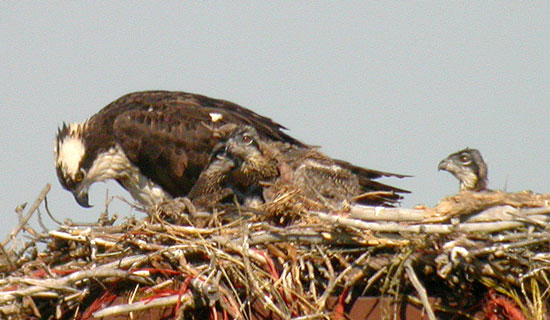
After the "big sit," three chicks emerged from their shells and found that they were hungry after being balled up for so long and having nothing but yolk to sustain themselves. Having placed the nest strategically by the fish-laden Provo River and Utah Lake, it didn't take the male but a minute or two to swoop down, plunge head- and feet-first into the water, grab a fish with its special barbed pad on the soles of its feet, adjust the fish so the head is pointing forward to decrease the air resistance and fly back to the waiting new-born chicks and their vigilant mother.
[Note two of the chicks, hardly visibly, huddling together by their mother].
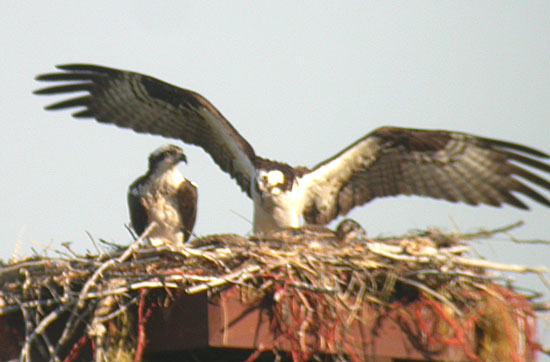
According to the report of a local primate (Homo sapiens) living near by, the mother Osprey spent hours shading the young Ospreys from the unusually hot summer sun. With her wingspan of typically around 5 feet , she would be able to provide enough shadow for the vulnerable chicks for several weeks before they mature a bit.
Photos from July 8th
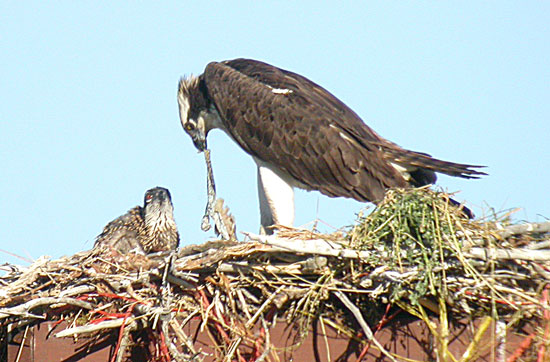 A steady
supply of food must be provided for the young birds who will fledge just
under two months after hatching.
A steady
supply of food must be provided for the young birds who will fledge just
under two months after hatching.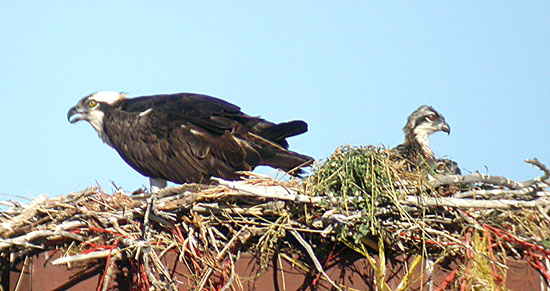 Already
becoming more independent, the little one practices his fierce raptor stare
which is starting to look quite convincing.
Already
becoming more independent, the little one practices his fierce raptor stare
which is starting to look quite convincing.
Photos from July 14th
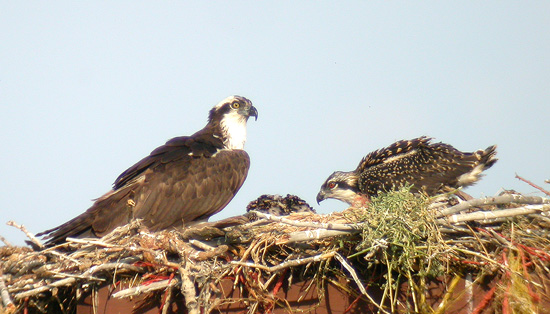 The
chicks are starting to bulk up and feather out--not looking quite so baffled
and intimidated.
The
chicks are starting to bulk up and feather out--not looking quite so baffled
and intimidated.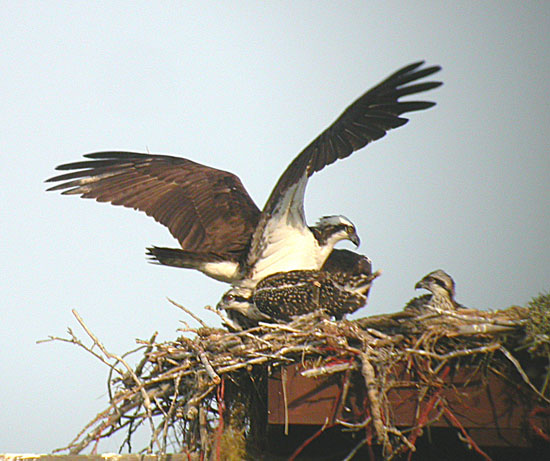 The space in
the nest being limited, the male spends a lot of his time keeping watch from
a nearby pole. He drops in regularly to bring a fish for dinner and
pops in every now and then just for a visit.
The space in
the nest being limited, the male spends a lot of his time keeping watch from
a nearby pole. He drops in regularly to bring a fish for dinner and
pops in every now and then just for a visit.
Photos and text by Milt Moody
Copyright 2003 ©
Milton G. Moody – All Rights Reserved